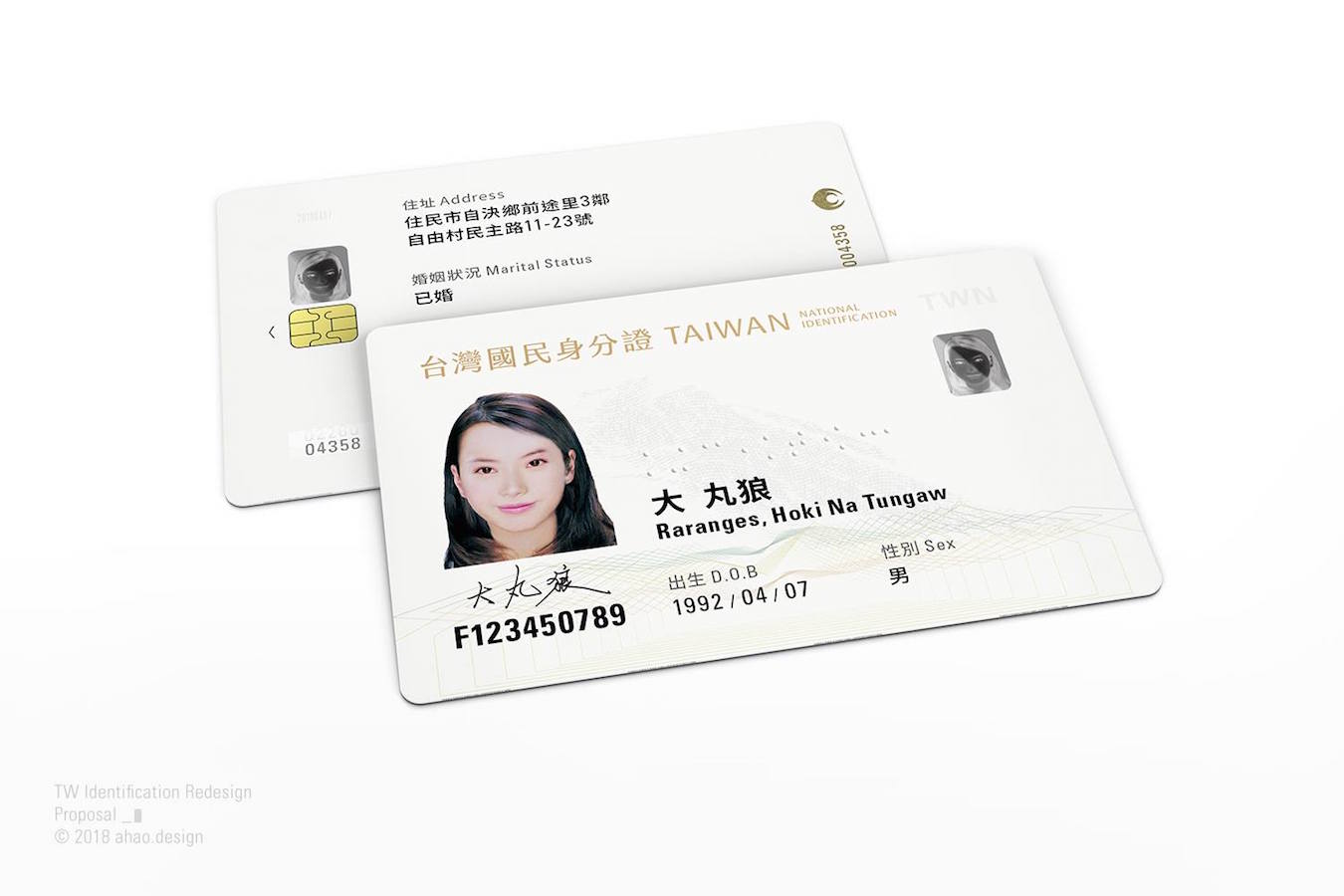by Brian Hioe
語言:
English
Photo Credit: Huang Kuo-Chang/Facebook
ANGER HAS followed suit after the winner of a contest to design a new Taiwanese identification card had only 46 votes, disregarding the most popular design, which had 97,498 votes. The contest was held online, allowing individuals to submit designs and vote on which design they thought was best, with this being taken into consideration by a panel of judges from the Ministry of Culture and Ministry of the Interior.
The winner of the contest as chosen by this committee was Vance Luic, whose design was entitled “Shape”. The most popular design was entitled “Taiwanese National Identity Card — Local Residents of the Island”, by designer Lin Hao-han (Full disclosure: Lin has incorporated New Bloom articles into past publications designed by him). That Luic’s design only had 46 votes has led to backlash from members of the public, who see their will as having been disregarded, and accuse the election process of having simply been a sham.
 The most popular design for the Taiwan National Identification contest, perceived as pro-independence by many. Photo credit: Ahao Design
The most popular design for the Taiwan National Identification contest, perceived as pro-independence by many. Photo credit: Ahao Design
Members of the public generally suspect that the reason why Lin’s design was passed over was because Lin made a strong assertion that Taiwan was an independent country through his design by titling it the “Taiwanese National Identity Card.” Otherwise, Vance Luic’s design resembles Lin’s minimalist design, leading many to conclude that the committee may have sought to avoid the scrutiny of members of the public that they had not picked the most popular design.
In particular, controversy broke out regarding the Taiwanese identification card contest in May because of designs perceived as pro-independence and pro-unification, or at least inflective of Republic of China (ROC). Lin’s design, which was seen as pro-independence, was the most popular design in voting, but the third most popular design was entitled the “Sun Yat-sen Version of the Republic of China National Identity Card”, and its design was reflective of ROC iconography.
With Taiwanese identity generally on the rise in past years since the Sunflower Movement, various Internet-based grassroots efforts to “crowdsource” markers of identity have taken place, with campaigns to create new passports, national identification cards, currency, and national flags since 2014. While these were all unofficial contests, such contests eventually won the support of independence-leading legislators such as Freddy Lim of the NPP and Gao Jyh-Peng of the DPP, who may have wished to encourage assertions of Taiwanese identity through sponsoring these unofficial contests.
The contest to design a new national identification card would be the first official contest of this nature. However, the ultimate results of this process prove revealing. Namely, “crowdsourcing” Taiwanese identity will always run into its limits when ROC state actors have little intention of letting Taiwanese decide their identity through a direct, transparent, and open voting process if it leads to the direct challenges to the ROC framework. In such cases, ROC state actors probably will eventually in to quell such decision-making processes, even while attempting to pass off an undemocratic, even “black box” process as one which is transparent and democratic.
One observes a similar phenomenon in how, despite passing amendments to the Referendum Act long pushed for by Taiwanese civil society, these amendments did not allow for voting on changes to the ROC framework, leaving this off of the table despite the aim of many of those who pushed for changes to Referendum Act was to allow Taiwanese to settle long-standing questions regarding Taiwanese identity and Taiwan’s national status. Namely, the ROC system will always step in to prevent itself from being overturned, meaning that challenges to the ROC framework must always begin from the outside.
 The design named as the winner. Photo credit: Ministry of the Interior
The design named as the winner. Photo credit: Ministry of the Interior
More generally, with regards to government attempts at “crowdsourcing”, one observes that sometimes government actors simply wish to act as though they have taken the views of the public into account, when they actually never had any intention to go with the views of the public. This is a broader dilemma one can see in Taiwan’s electoral system in, for example, how hearings are sometimes organized by political parties simply in order to act as though they have solicited opinions from the citizenry, when they have little intention of taking such opinions into account in their decision-making process.
As such, the Taiwanese national identification card contest points to many of the shortcomings of Taiwanese democracy in microcosm. This would be ironic, but not too surprising.

